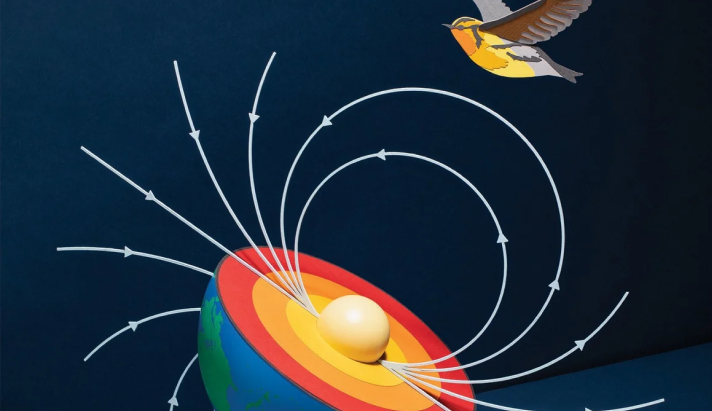Animal Navigation Abilities Discovered to Function Near Quantum Limit for Magnetic Field Detection

February 4, 2025 report
This article has been reviewed according to Science X's editorial process and policies. Editors have highlighted the following attributes while ensuring the content's credibility:
- fact-checked
- peer-reviewed publication
- trusted source
- proofread
by Bob Yirka , Phys.org
A pair of physicists at the University of Crete has found that some types of biological magnetoreceptors used by various creatures to navigate, operate at or near the quantum limit. In their paper published in the journal PRX Life, I. K. Kominis and E. Gkoudinakis describe how they worked the problem of magnetic sensing in tiny animals in reverse by putting bounds on unknown quantum boundaries, and what it showed about the navigation abilities of certain animals.
Prior research has shown that many creatures use the Earth's magnetic field as a navigation aid. Some sharks, fish and birds, for example, use it to help them traverse long distances. Different animals also have different types of magnetic sensors, including radical-pair, induction and magnetite mechanisms.
Radical-pair works by sensing correlations between unpaired electrons attached to certain molecules. Induction works by turning energy in the magnetic field into electricity and then sensing the electrical charge. And magnetite-based magnetoreception involves sensing the movement or orientation of tiny iron crystals in the body, similar to a human-made compass.
Kominis and Gkoudinakis were curious about the bounds of sensing abilities of such creatures, based on their type of sensors. They began their work by noting that the performance of a magnetic sensor can be judged using three types of parameters—volume, time and degree of uncertainty of the magnetic-field estimates. They also noted that the parameters used to judge such performance can be made small to accommodate tiny sensors, but there is also a limit based on Planck's constant.
To judge the performance of biological sensors, the researchers noted that some animals likely operate near this limit because of their tiny size and the very small amount of magnetic field changes involved. Rather than try to somehow measure such parameters, the pair worked it in reverse, starting with the quantum limit and working back to the unknown parameters.
They found that at least two biological magnetoreceptors associated with chemical reaction sensing in various animals may operate right at the quantum limit of magnetic field detection, or perhaps very close to it—a finding they suggest, that could lead to the development of more sensitive magnetic field sensing devices.
More information: I. K. Kominis et al, Approaching the Quantum Limit of Energy Resolution in Animal Magnetoreception, PRX Life (2025). DOI: 10.1103/PRXLife.3.013004
Journal information: PRX Life
© 2025 Science X Network




